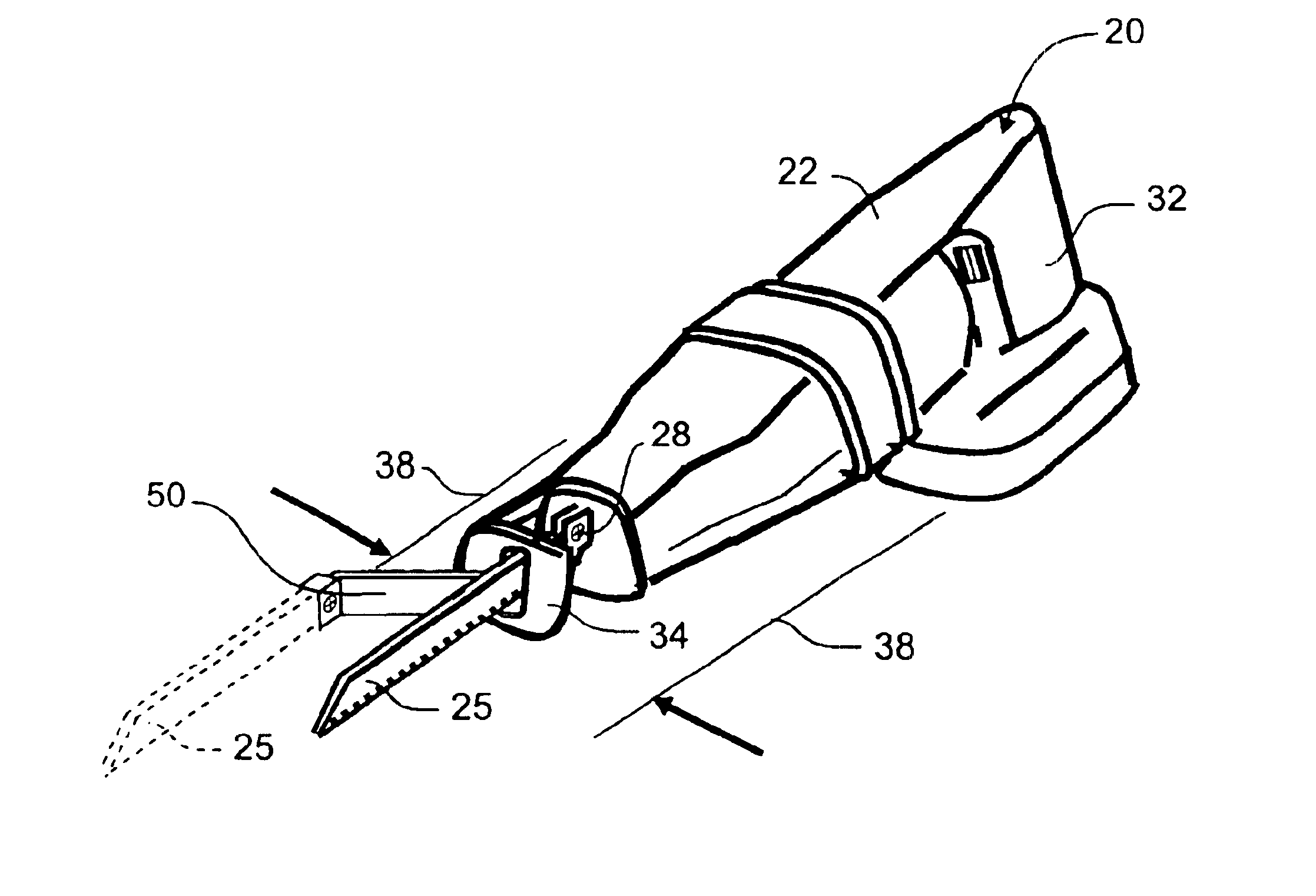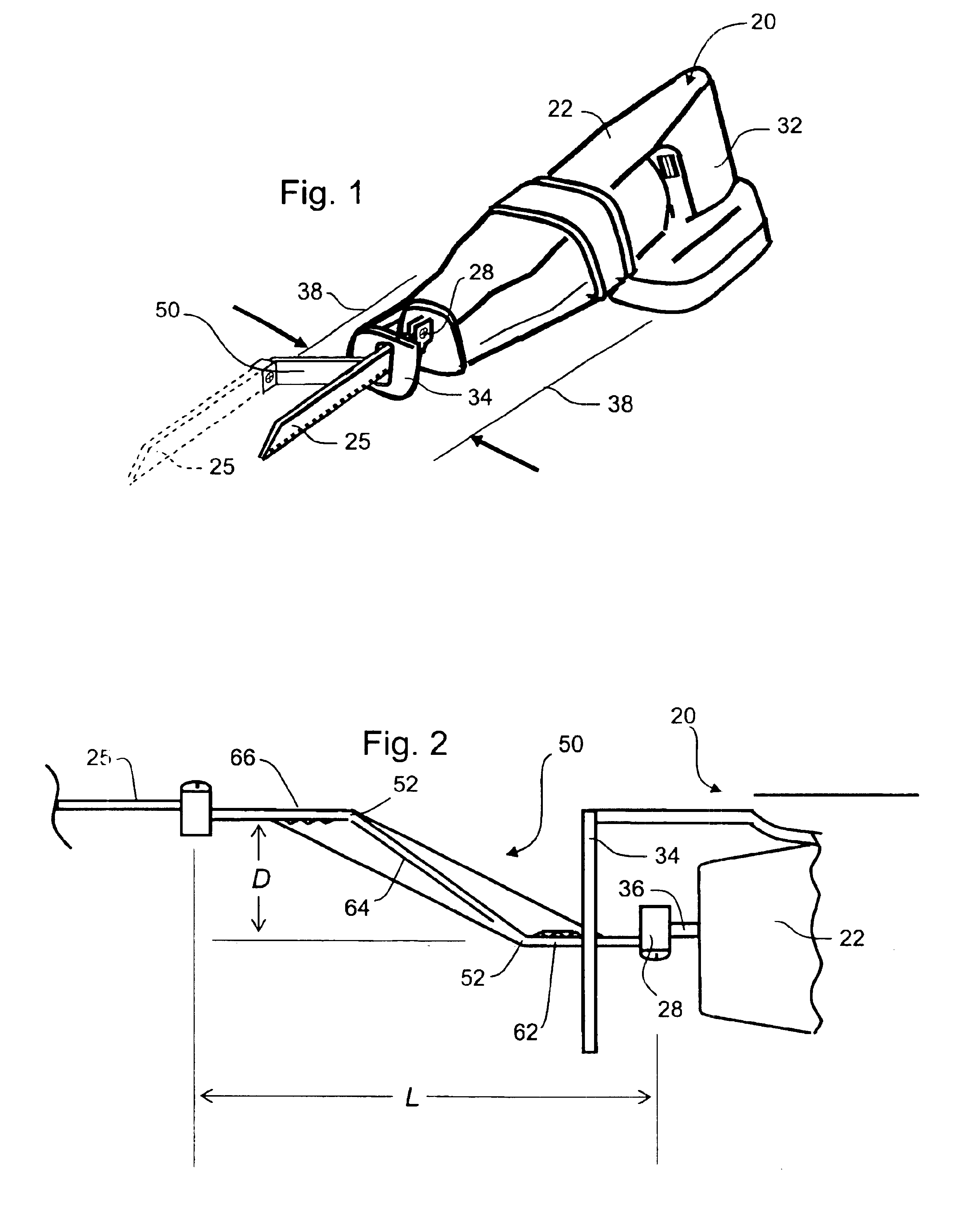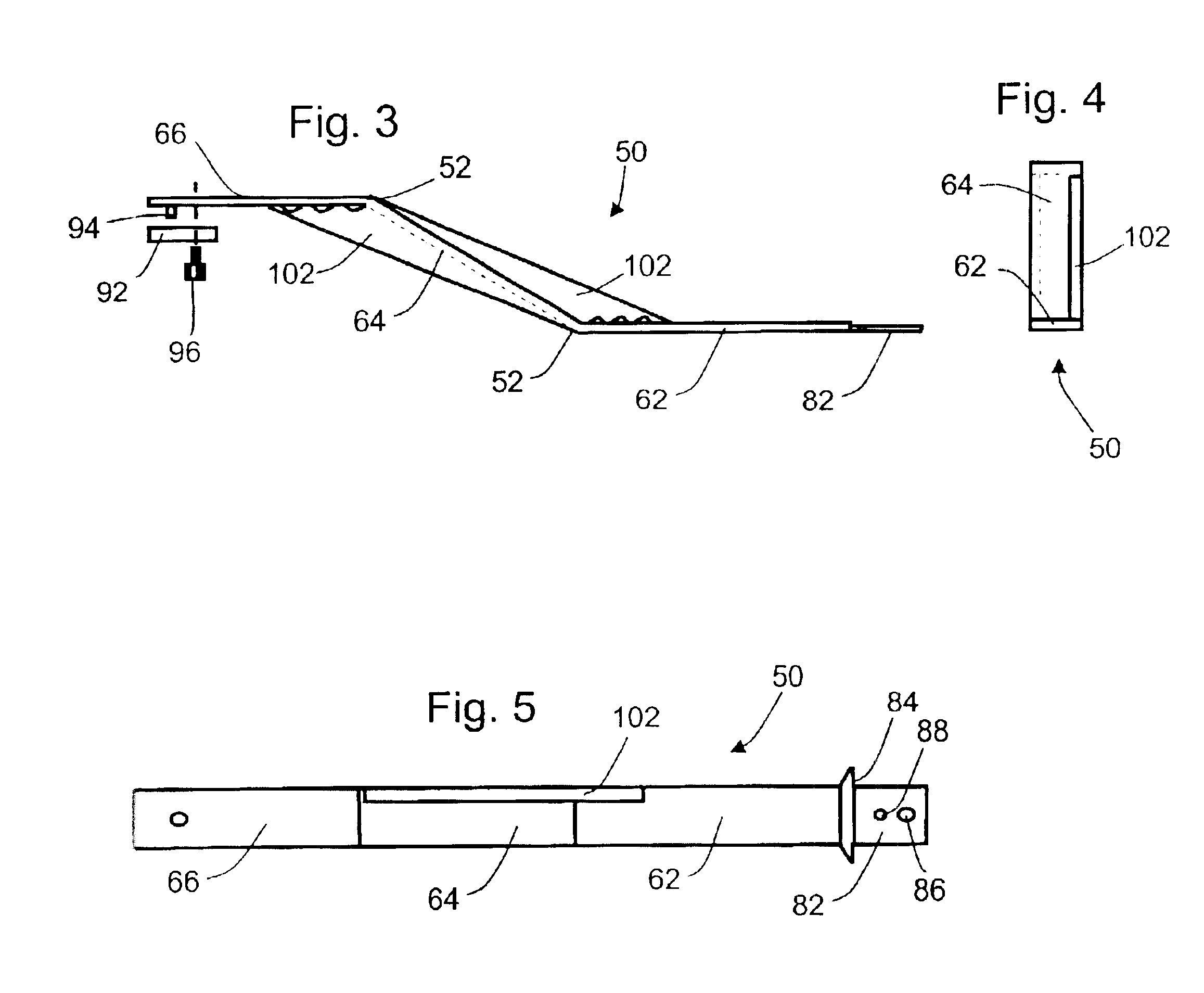Reciprocating saw blade extension with lateral offset
a reciprocating saw and blade technology, applied in the direction of metal sawing devices, metal sawing apparatus, manufacturing tools, etc., can solve the problems of blade bending, blade bending, and hard tooling when bending the blade to cu
- Summary
- Abstract
- Description
- Claims
- Application Information
AI Technical Summary
Benefits of technology
Problems solved by technology
Method used
Image
Examples
Embodiment Construction
According to the invention an extension is attachable to the driving shaft of a reciprocating blade tool such as a saber saw. The extension is inserted between the normal connection for the blade, namely the reciprocating driving shaft, and the blade. That is, the extension is attached to the drive shaft and the blade is attached to the end of the extension. This is accomplished using structures for the opposite ends of the extension that resemble the structures of the blade and its point of drive shaft attachment, and which form a rigid extension that positions the blade at a longitudinal and lateral distance from its nominal directly-attached position on the reciprocating driving shaft of the tool.
FIG. 1 illustrates an exemplary form of reciprocating blade tool 20. The tool has a housing 22 that carries an electric motor, pneumatic piston / cylinder or other mechanical arrangement (not shown) that reciprocates a serrated blade 25, attached to a fitting 28 at the end of a reciprocati...
PUM
| Property | Measurement | Unit |
|---|---|---|
| Angle | aaaaa | aaaaa |
| Distance | aaaaa | aaaaa |
Abstract
Description
Claims
Application Information
 Login to View More
Login to View More - R&D
- Intellectual Property
- Life Sciences
- Materials
- Tech Scout
- Unparalleled Data Quality
- Higher Quality Content
- 60% Fewer Hallucinations
Browse by: Latest US Patents, China's latest patents, Technical Efficacy Thesaurus, Application Domain, Technology Topic, Popular Technical Reports.
© 2025 PatSnap. All rights reserved.Legal|Privacy policy|Modern Slavery Act Transparency Statement|Sitemap|About US| Contact US: help@patsnap.com



